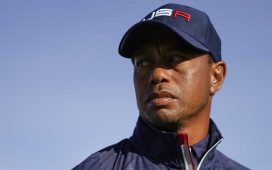These jobs begin before dawn and are physically taxing, and while housing conditions and wages in recent years have improved, the lives of these workers, the majority of whom are immigrants from Mexico and Central America, are far from the enviable, luxurious experiences most often featured in pictures of the racetrack. For most of the people who attend the races, backstretch workers are anonymous and invisible.
That was not the case with Mrs. Whitney.
“She and John both felt a calling to give back to the backbone of the industry,” said Humberto Chavez, the chaplain at the New York Racing Association tracks of Aqueduct Racetrack in Queens, Belmont Park on Long Island and Saratoga Race Course. “I’ve never seen anyone interact with workers the way she did. The hug wasn’t perfunctory; it was a big hug and a kiss. She was happy to be there, and happy to know they were well.”
The program also included movie nights, bingo and trips to local attractions — all designed to give backstretch workers “an experience and make them feel special,” said Paul Ruchames, executive director of the Backstretch Employee Service Team.
“She wanted them to feel the way other visitors to Saratoga feel, to be first class and respectful, and she more than achieved that goal.”
For the dinners, Mrs. Whitney cast a presence beneath the tents that were hoisted above a plain field, with a clientele that was dressed mostly in jeans and often coming straight from work. At one event, she was bedecked in a jeweled necklace, her hair styled, wearing a white dress.
“Even in later years, when she was very fragile, she would always come,” Mr. Ruchames said. “She truly wanted to meet and talk with backstretch workers, and they’d line up to speak with her.”







